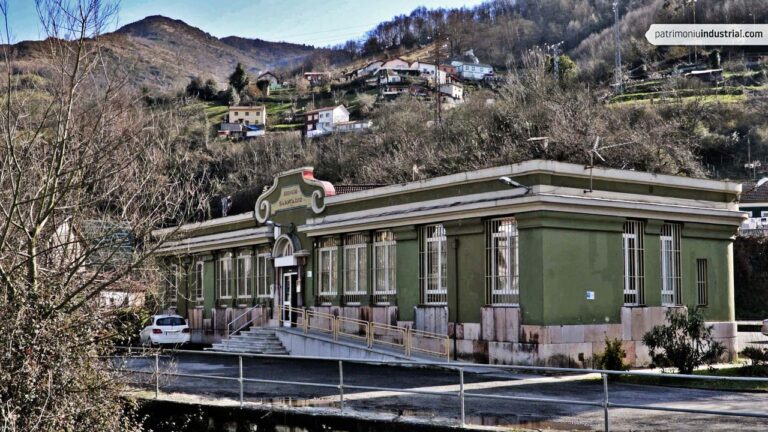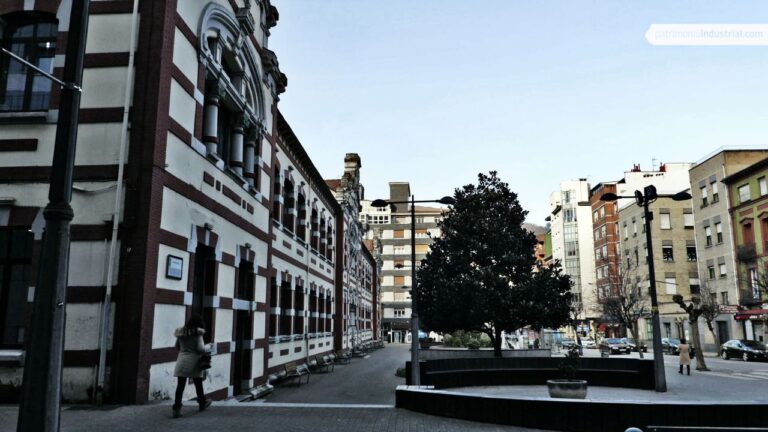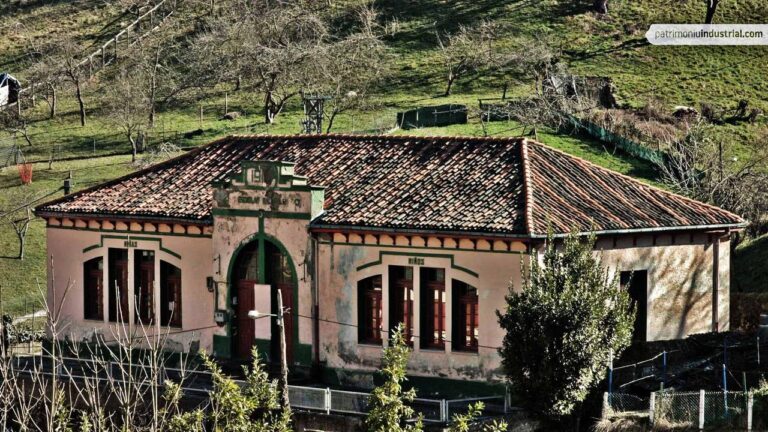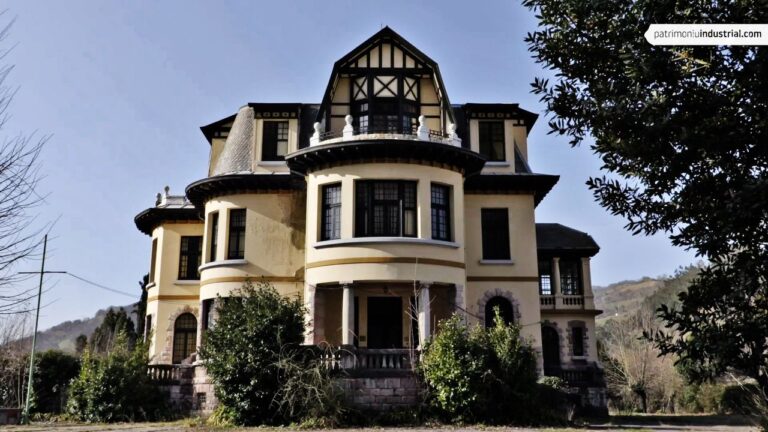
by María Zapico López
B.A. and Ph.D. degrees in Art History (University of Oviedo). High school teacher. Her research focuses on the intersections of art history and industrial heritage.
From the middle of the nineteenth century, coal mining produced remarkable changes in the rural Asturian landscape, filling it with surprising constructions.
Víctor Considérant used to say that architecture is the writer of history – it would only be necessary to lay eyes on the mining sites to return to bygone eras associated with this industry. There are countless industrial buildings featuring a blend of very original designs and singular technical and constructive techniques. They make up the industrial heritage that reveals our collective memory. Inspired by social policies, the mining industry also produced a number of buildings outside of the main work areas. This is the case with buildings at times inspired by paternalistic guidelines forged by hygienists and philanthropists that were then adopted by large companies such as Duro Felguera and the Sociedad Hullera with the purpose of reinforcing workers’ loyalty and boosting their performance.
Providing homes for workers was a stable company policy, and their education was also attended to by means of the building of primary schools. Certain charitable and educational institutions are worth noting, such as the Orfanato de Mineros Asturianos (Asturian Miners’ Orphanage), established by Manuel Llaneza through the Sindicato Minero de Asturias (Miners’ Trade Union of Asturias). There were also trade schools for adults, training engineers and foremen in the latest scientific and technical advances. Additionally, there were buildings for spare-time activities, as well as others for food retail and medical assistance, including large hospitals such as Sanatorio Adaro (Adaro Sanitarium). Also worth noting are the sophisticated developments which were built as residences for the engineers and the management.
ÁLVAREZ ARECES, M., Solo la vida inquieta es vida - Ernesto Winter Blanco, Ateneo Obrero, Gijón, 1993.
ÁLVAREZ FERNÁNDEZ, M.V., La escuela del paternalismo industrial asturiano (1880-1936), Ediciones Trea, 2006.
FELGUEROSO DURÁN, A.R. Arquitectura industrial en el valle del Nalón (1890-1940), CICEES, 2006.
SIERRA ÁLVAREZ, J., “De las utopías socialistas a las utopías patronales: para una genealogía de las disciplinas industriales paternalistas”, Revista Española de Investigaciones Sociológicas, Madrid, 1984 (págs. 29-44).
SIERRA ÁLVAREZ, J., “Política de vivienda y disciplinas industriales paternalistas en Asturias”, Ería, 8, 1985, p. 61-71.
SUÁREZ ANTUÑA, F. “La Hullera Española. El poblado de Bustiello”, “Mina Solvay. Lieres”, “Pozo Fondón”, en Patrimonio industrial de Asturias: 33 propuestas de industria, cultura y naturaleza, Consejería de Cultura y Turismo del Principado de Asturias, CICEES, 2010.
ZAPICO LÓPEZ, M, "La asistencia sanitaria a obreros heridos: el hospital Sanatorio Adaro de Langreo", en Liño 22. Revista Anual de Historia del Arte. 2016, págs. 89-100.






Recent Comments